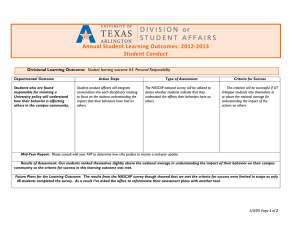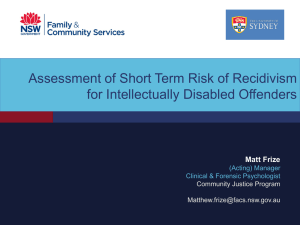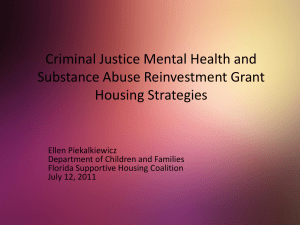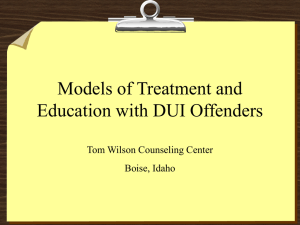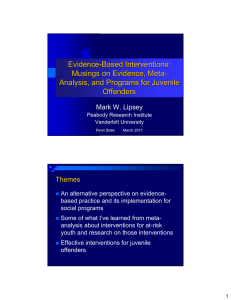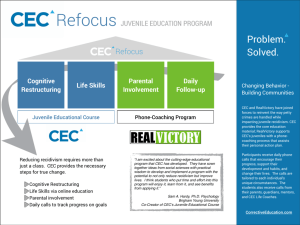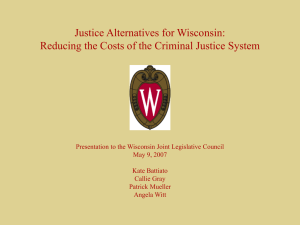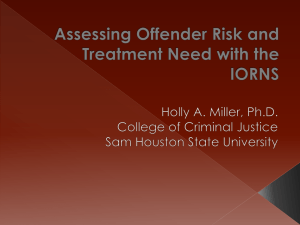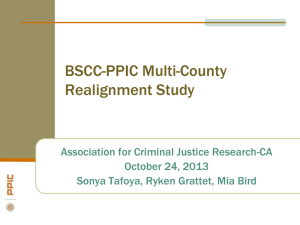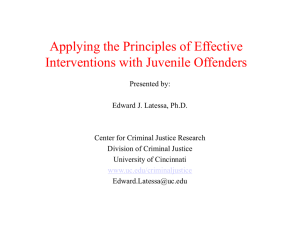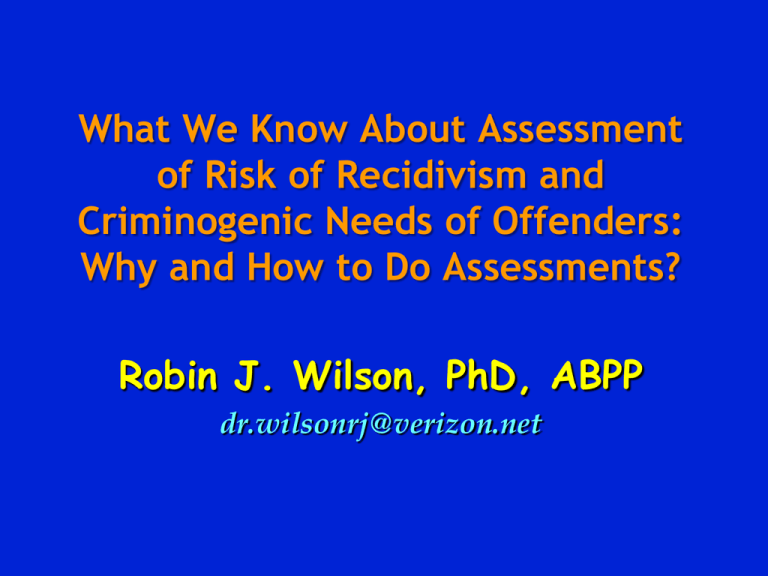
What We Know About Assessment
of Risk of Recidivism and
Criminogenic Needs of Offenders:
Why and How to Do Assessments?
Robin J. Wilson, PhD, ABPP
dr.wilsonrj@verizon.net
Risk Assessment
Risk assessment is the process of
identifying the probability or likelihood of
future dangerousness or harm, such as a
sexual offense or domestic assault.
In our general practice, Risk Assessment is
concerned with predicting the degree of
possibility of a re-offense for someone with
a known history of offending.
Why Assess Risk?
Promoting public safety
Guiding routine interventions
Targeting scarce resources
– Staff time
– Treatment
Exceptional measures
Risk & Dangerousness
BAD:
“This person is dangerous.”
GOOD: “If specific risk factors are present, then
there is a high/medium/low probability that
the person will engage in specific behaviour
within a specific period of time that may
place specific persons at risk for a specific
type and severity of harm.”
Static, Stable, & Acute Risk Factors
Definitions
Static – Non-changeable life factors that relate to risk
for sexual recidivism, generally historical in nature
Stable – Personality characteristics, skill deficits, and
learned behaviours that relate to risk for recidivism that
may be changed through intervention
Acute – Risk factors of short or unstable temporal
duration that can change rapidly, generally as a result of
environmental or intra-personal conditions
Risk Assessment
It is practically and scientifically impossible
to predict any future event with 100%
certainty. Consequently, a risk assessment
will always involve some degree of
uncertainty about the “truth” of the actual
prediction.
The task of risk assessment is to strike a
scientific and ethical balance in the
identification and management of potential
offenders, while optimizing public safety.
Three Generations of Risk Assessment
Bonta (1996)
First Generation = “Clinical Judgment”
Unstructured, Non-replicable, Personal Discretion
Based on experience and level of knowledge of the literature
Non-standard (even within same institution)
Level of prediction little better than chance
Second Generation = “Actuarial Assessment”
Static, Actuarial, Structured, Replicable, Less open to interpretation
Based on factors empirically related to recidivism
Standardized assessment, “Static” – Cannot measure change
“Moderate” levels of prediction
Third Generation = “Dynamic Assessment”
Based on factors empirically related to recidivism
Standardized assessment, measures changeable
Actuarial measure with dynamic factors
Principles of Risk
Management
Analysis
Communication
Collaboration
Monitoring
Intervention
Re-Analysis
Contact Information
Robin J. Wilson, PhD, ABPP
Wilson & Associates
Clinical and Forensic Psychology
941 806 9788
dr.wilsonrj@verizon.net

